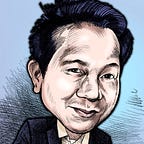The Continuum of Engagement
Pushing the boundaries of News Engagement Day
Today is News Engagement Day, a program created by the Association for Education in Journalism and Mass Communication (AEJMC) to encourage the public to engage with the news and “promote understanding of the principles and processes of journalism in a democratic society.” I’m all for advocating for the importance of media literacy and fact-based journalism, especially as we struggle with our current post-truth era.
But this is only half of the engagement story. As much as we inspire to get the public (and our students) to be more media literate and understand more clearly what we do as journalists, there’s also the other side of the equation. The question we often forget to ask ourselves is: How can we motivate more journalists (and journalism students) to put the community at the center of their work, be better listeners, and understand more precisely the needs of the public? Until we can think of the public not just as “audiences” and “consumers,” but also as experts and partners in the communities we aim to serve, we shouldn’t expect to receive the public’s complete trust.
Engagement is a continuum, and the public should always be at the center of that work. Inspired by Gideon Rosenblatt’s Engagement Pyramid as well as Peggy Holman’s Forms of Engagement (which is complementary to IAP2’s Spectrum of Engagement), I sought to visualize the thesis from my post in 2015 titled: “Engagement is Relational, not Transactional.”
The Continuum of Public Engagement in Journalism
The bottom half of this continuum is focused on transactional engagement, and it’s essentially what we’re asking the public to do today during News Engagement Day:
- Learn: Read an article, listen to a podcast
- Follow: Subscribe to a newsletter or social news feed
- Endorse: Buy a membership, share a story on social media
These various forms of engagements are transactional because the value proposition is mostly one-way. The more page views we get, the more subscribers or followers we obtain, and the larger membership we accrue, the more our metrics tell us we’ve succeeded. It says nothing about what the public gets out of the engagement other than being informed. However, if done with clarity and transparency, transactional engagement can be an opportunity to help the public learn more about our principles and process.
Let’s now think about the other half of the continuum. Today should also push the notion that engagement isn’t just transactional but also, and perhaps more importantly, relational. The modes of relational engagement from the public’s point of view include:
- Participate: Submit a question, attend a community gathering
- Collaborate: Accompany a reporter, contribute to a news story
- Lead: Join a news organizations’s community advisory board, form a local news cooperative
But what does this look like in the real world? We have a site that just might help — we just launched Gather, a project and platform to support community-minded journalists and other engagement professionals. You can read more about it here, here, and here as well as our post on Let’s Gather. I’d encourage you also to request an invitation to join the community of practice.
At the time of this writing, you’ll get up to speed on over 60 case studies and projects ranging from collaborative and open reporting to facilitated dialogue and live events. And we also carved out a section specifically for those brand new to engaged journalism. In it, you’ll find resources to hit the ground running in this re-emerging movement.
So as we encourage our students and the public to share how they are engaging with the news throughout News Engagement Day, let’s also push the notion of relational engagement. Let’s also honor and share the work of engaged journalists across the nation who are making journalism more responsive to the public’s needs, and more inclusive of the public’s perspectives and expertise.
Andrew DeVigal is an endowed chair in journalism innovation and civic engagement at the University of Oregon School of Journalism & Communication’s Agora Journalism Center, the gathering place for innovation in communication and civic engagement.
Gather, a project + platform to support community-minded journalists and other engagement professionals, is a collaborative project led by the Agora Journalism Center. Project funders include the John S. and James L. Knight Foundation and the Democracy Fund.
